Week 97, 2020
- by Mike@PiedmontFarmstead
- The 'Stead
- Comment 1
- June 15, 2020
We’re almost 100 weeks into our journey! Looking back it is unbelievable where we started and how far we have come. I’m sure we’ll say the same in another 100! When we started the plot was a grass field with no vegetation and mowed a few times a year. Now, most all of that area is producing fruits and vegetables, we’re even going to get our first apples this year (fingers crossed).
STILL Support Local Small Farms:
There will no doubt be long lasting changes to the way we fundamentally think and act as a result of the current situation. Our hope as farmers is that the good changes stick with our country. Our small farming community is seeing increased interest and demand for small farm produced products. Grocery stores are having trouble keeping items on the shelves. Many customers are opting to participate in on-farm pickups, pre-ordering and attending farmer’s markets. While the driving force behind this shift is certainly not the best, we hope that this shift to more local food stays around and continues. We urge you to find and support your local farms, they would love to have you!
Mount Holly Farmer’s Market:
We had our first market at the Gastonia Farmers Market, a bit unplanned. We had planned to join the Mount Holly Farmer’s Market, but with all of the events going on and most markets not open we were unsure if they were going to open. We participated for the first 5 weeks at the Gastonia Market until seeing that the Mount Holly market had opened, sadly missing the first weekend. We were able to join and go the the second weekend they were open. That first Saturday market was the talk of the market, having their best day EVER! Now with four Saturdays under our belt we can confidently say this market is our home. The community support is amazing and the market volunteers are awesome! If you are in the area, we would highly recommend going, farmer’s markets are all about community support and this has to be the best in the area for sure.
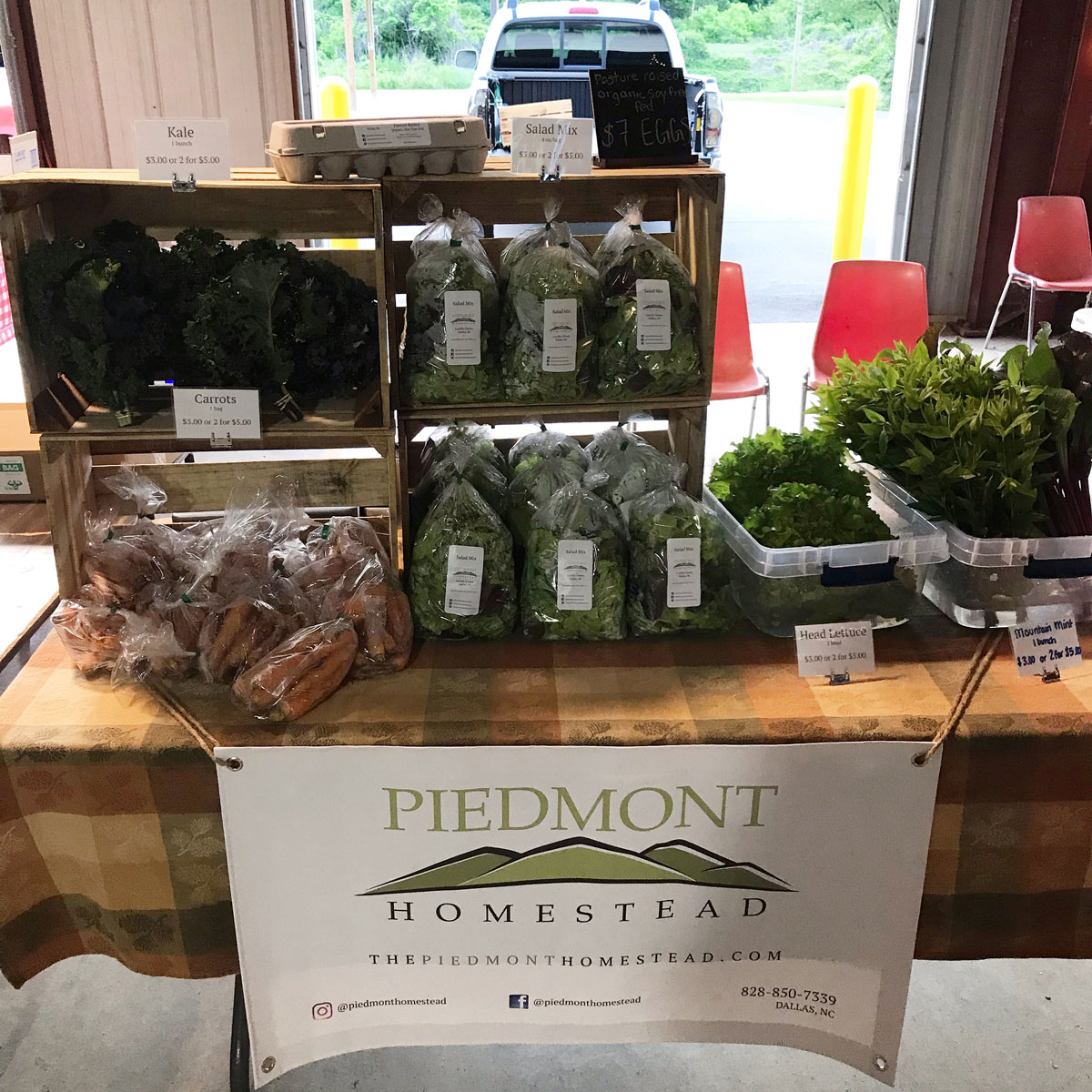
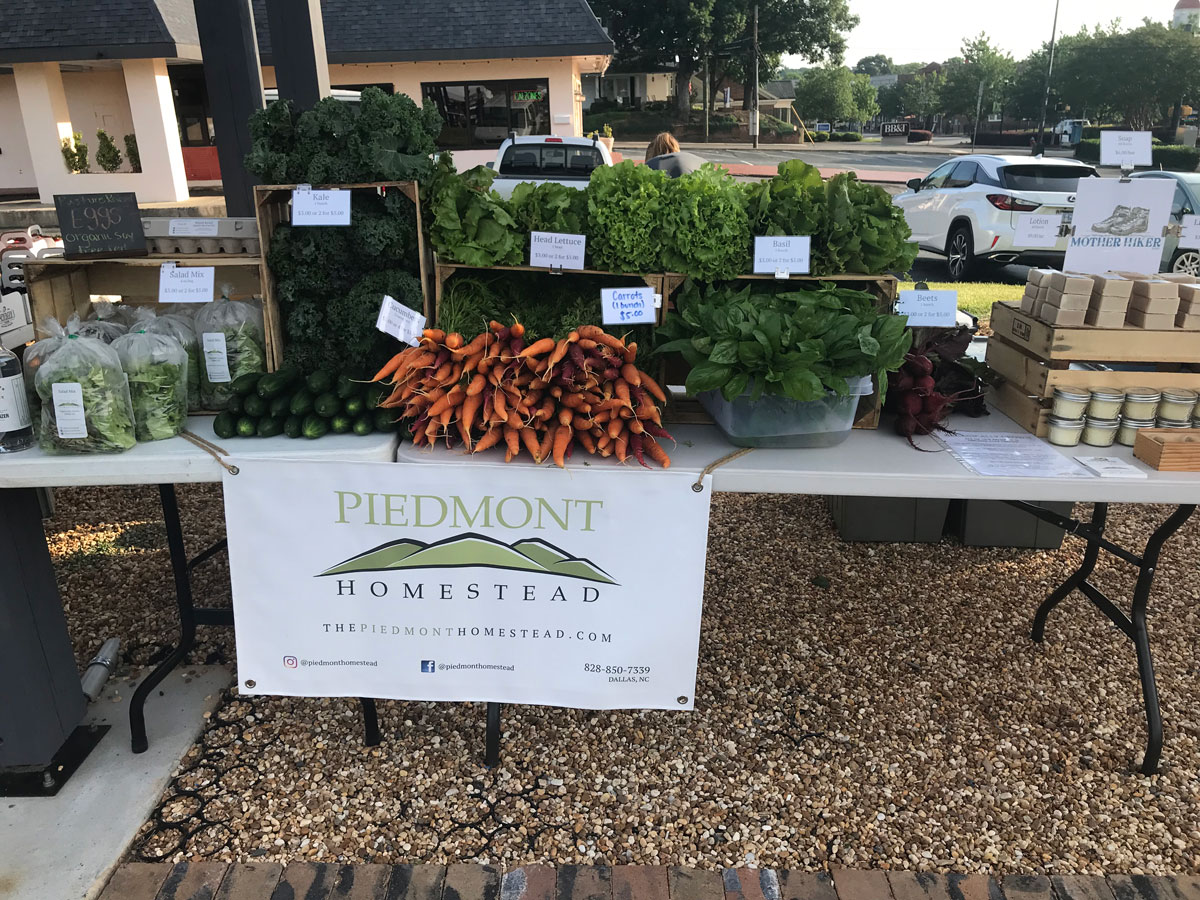
In The High Tunnel:
The high tunnel is in high production, we just got our first tomato of the season this Monday. We’ve already harvested: Basil, three successions of Cilantro, Cucumbers and lots of Lettuce. Tomatoes are just starting to come in, peppers are a few weeks behind and eggplants right along with them. We have a second succession of cucumbers seeded for late summer/fall production, something we are doing different this year to keep the plants productive. Last year our cucumbers slowed down toward the end of the summer and got cucumber mosaic virus that moved to our peppers making them unsellable, we hope to avoid that this year.
We’ve also got tomatillos growing, a first for us. They are doing well, very excited to see these grow and fruit in a month or so. Can’t wait to make some green salsa or experiment with them.
The big issue right now we are fighting in the tunnel are the aphids on the tomatoes. We’ve heard from neighboring farms that everyone in our area seems to be having the same problems. Early in the season we had noticed aphids on cucumbers, tomatoes and peppers, but they have since moved to only the tomatoes. Controlling the aphids in our minds is for us to take a passenger seat to nature and help, spraying anything on the plants to control the aphids is out of the question. After doing some research we found ladybugs and a few other beneficial insects love to eat aphids. Ladybugs were out of stock so we tried Green Lacewings instead, in the adult stage they don’t eat aphids however in their larvae stage they eat lots of them. We put a first batch of green lacewing eggs out about three weeks ago and we are not seeing any results. The pressure from the aphids now is pretty bad at this point and we hope to have the under control soon with another batch we released this week!
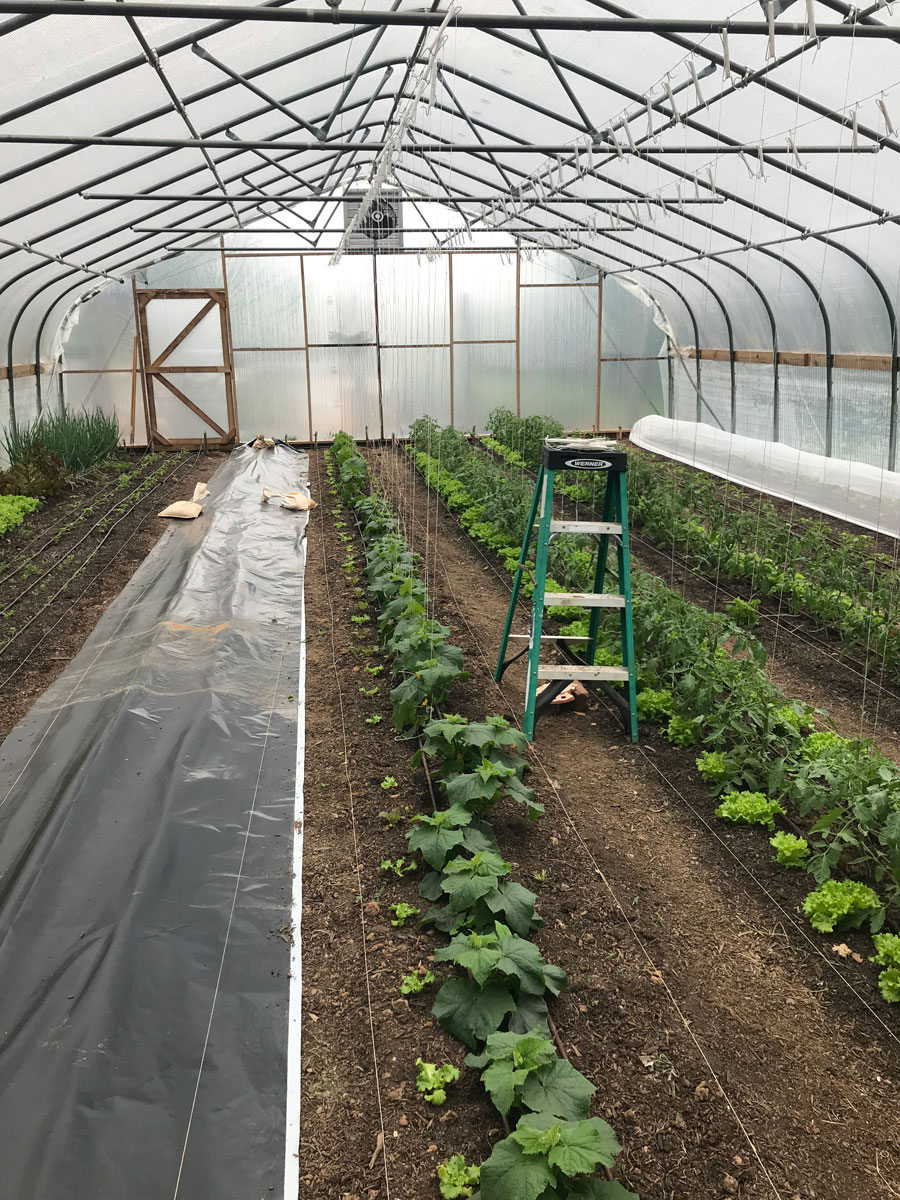
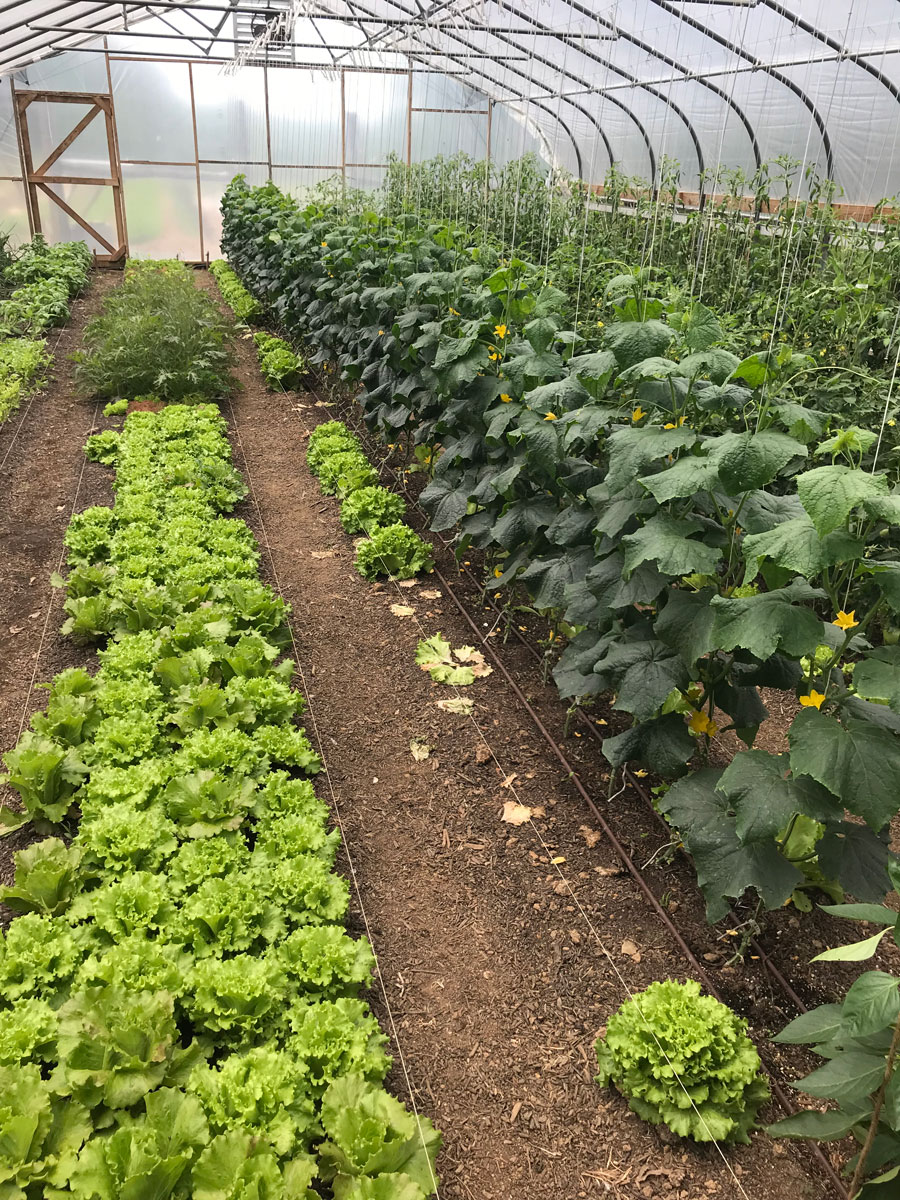
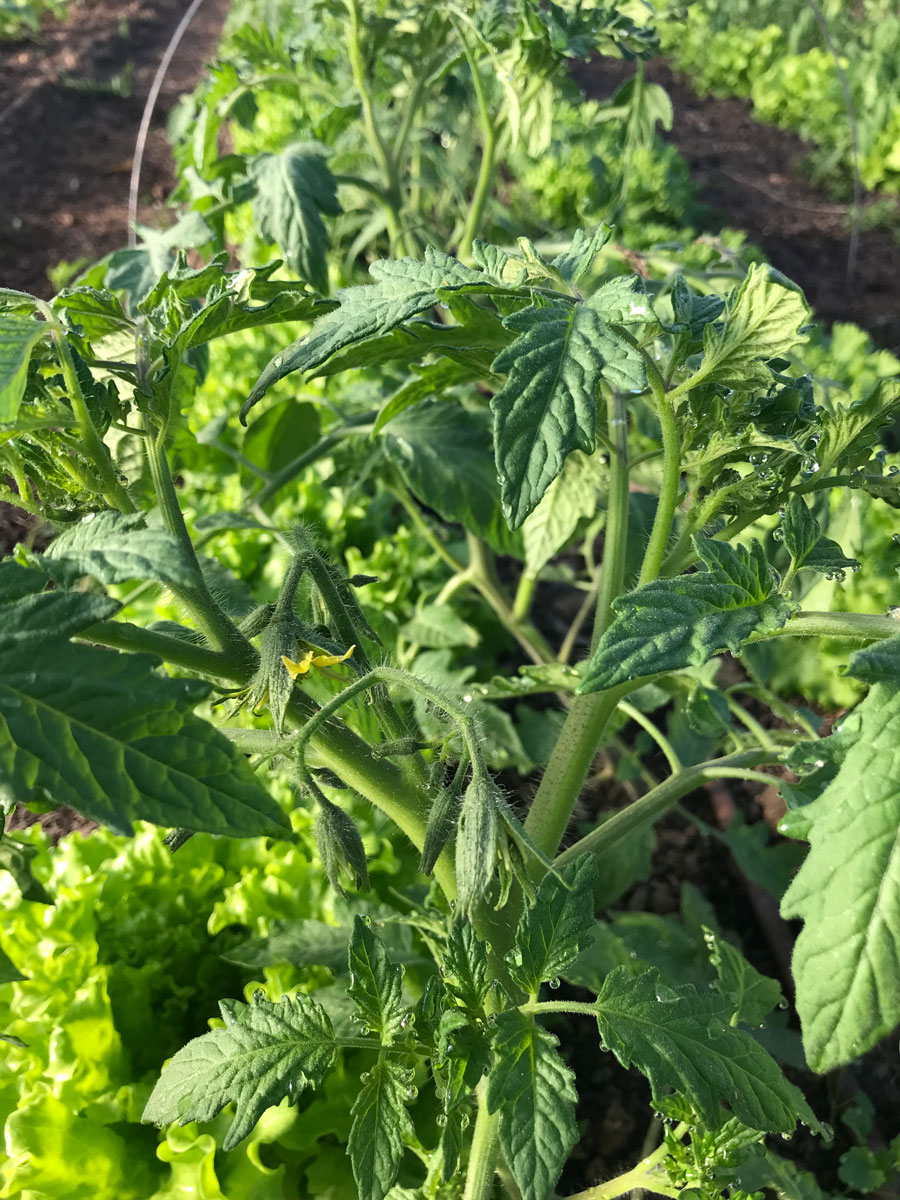
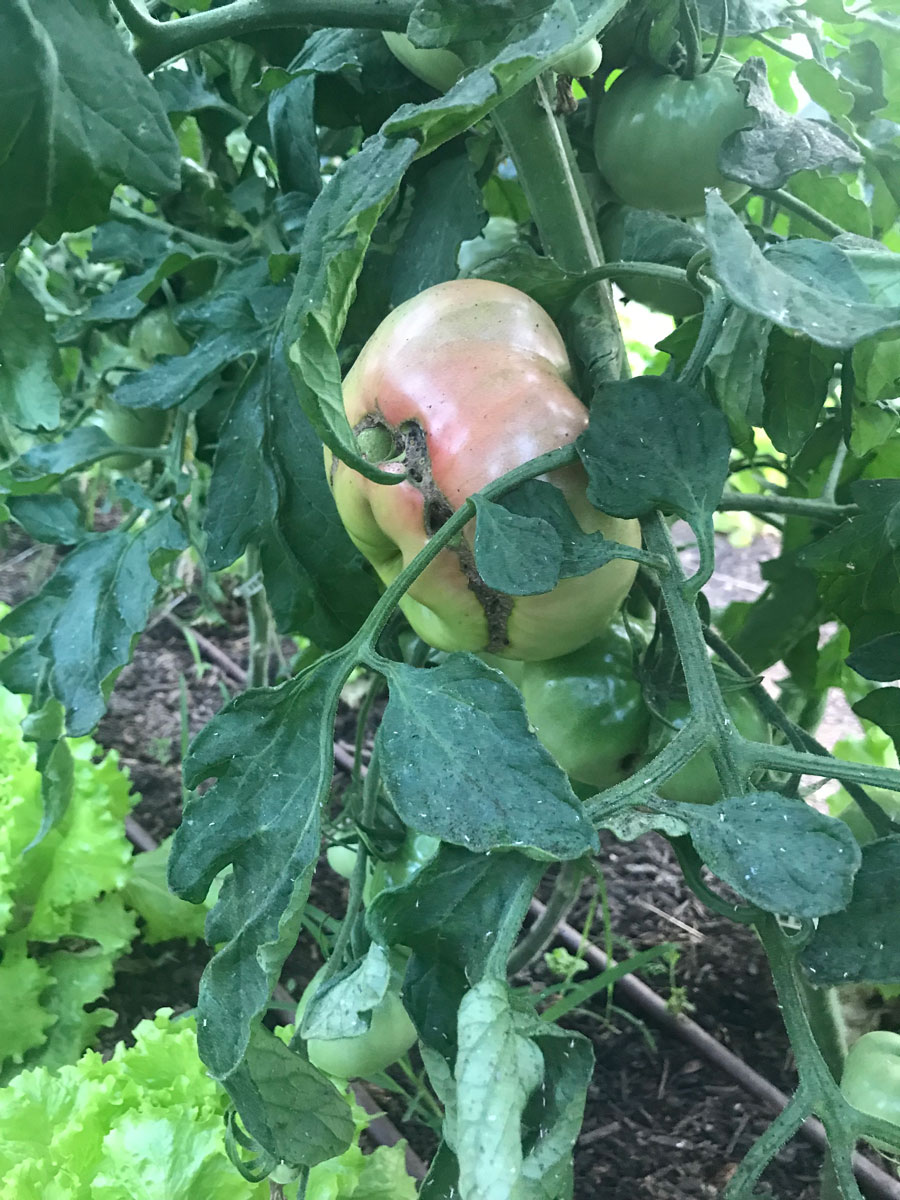
Outside Plot:
Probably the most noticeable difference from last year is the outside plot. It is in full production now with a crop growing in every bed. We’ve been harvesting out of this plot since April when we started selling at the market. Right now we have lettuce, kale, beets, carrots, corn, beans, watermelons and asparagus all growing in this plot. So far only small issues early in the season with aphids on the kale plants and rabbits eating lettuce/kale.
To control the aphids on the kale, we would normally leave this to nature to balance back out. However, we were quickly having an explosion of aphids and the plants were suffering badly. The solution ended up being a combination of multiple things. We first took off the insect netting (a risk here with white cabbage moth) and mixed up a natural soap and water mixture to “wash” the aphids off. We also tried something new this year and bought green lacewing eggs and released them. Still unsure if this helped, but we did get a big rise in lady bug larvae we found in the plants, both predators of aphids. It was awesome to see those lady bugs come in on their own, as if mother nature said “I got this.”
The simple/friendly solution to the rabbits we are working on is a one foot tall band of chicken wire at the bottom of our perimeter fence. While the pressure from the rabbits was not bad, rabbits reproduce…well, like rabbits.
We also had some funky weather with multiple late frosts and a freeze on May 9th a full month after the average last frost day. We are growing in a frost pocket and luckily we are prepared to cover the field up for events like this.
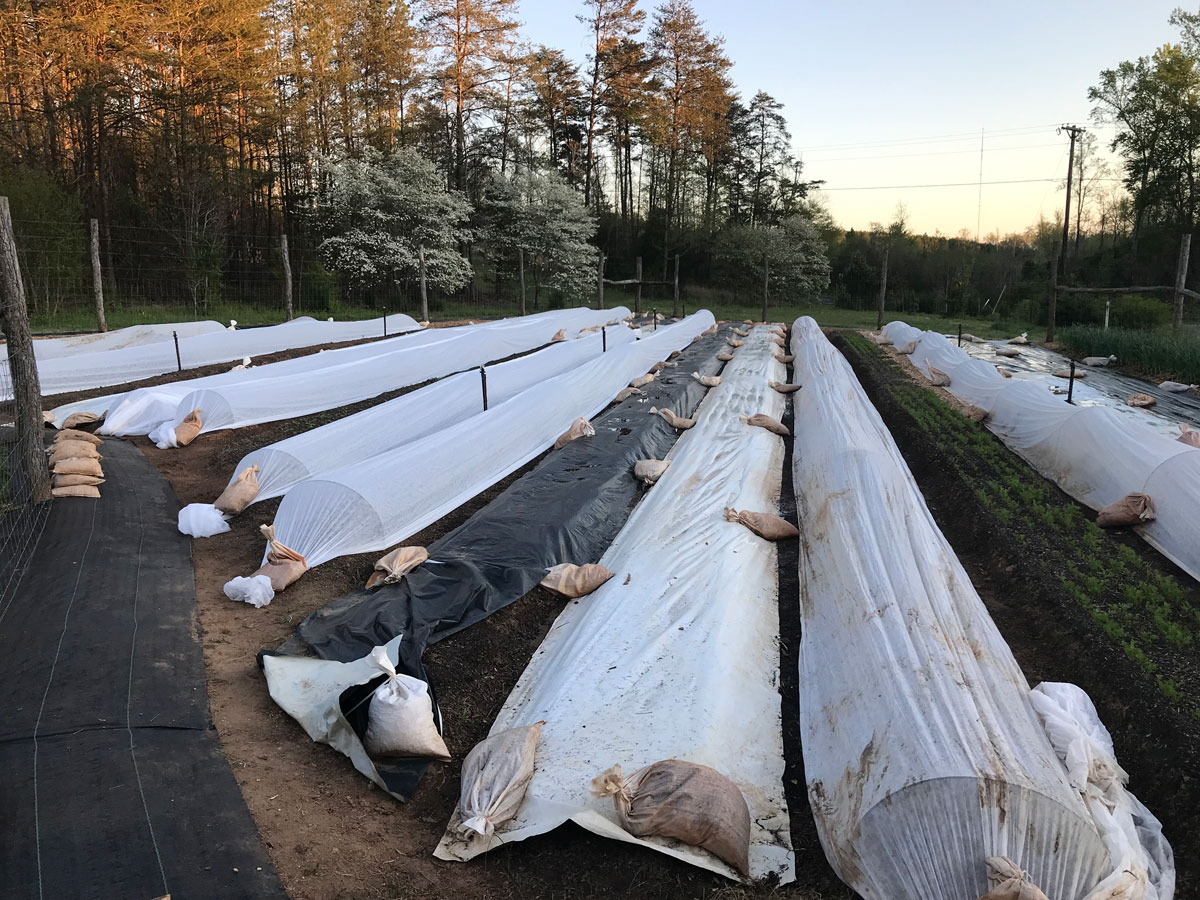
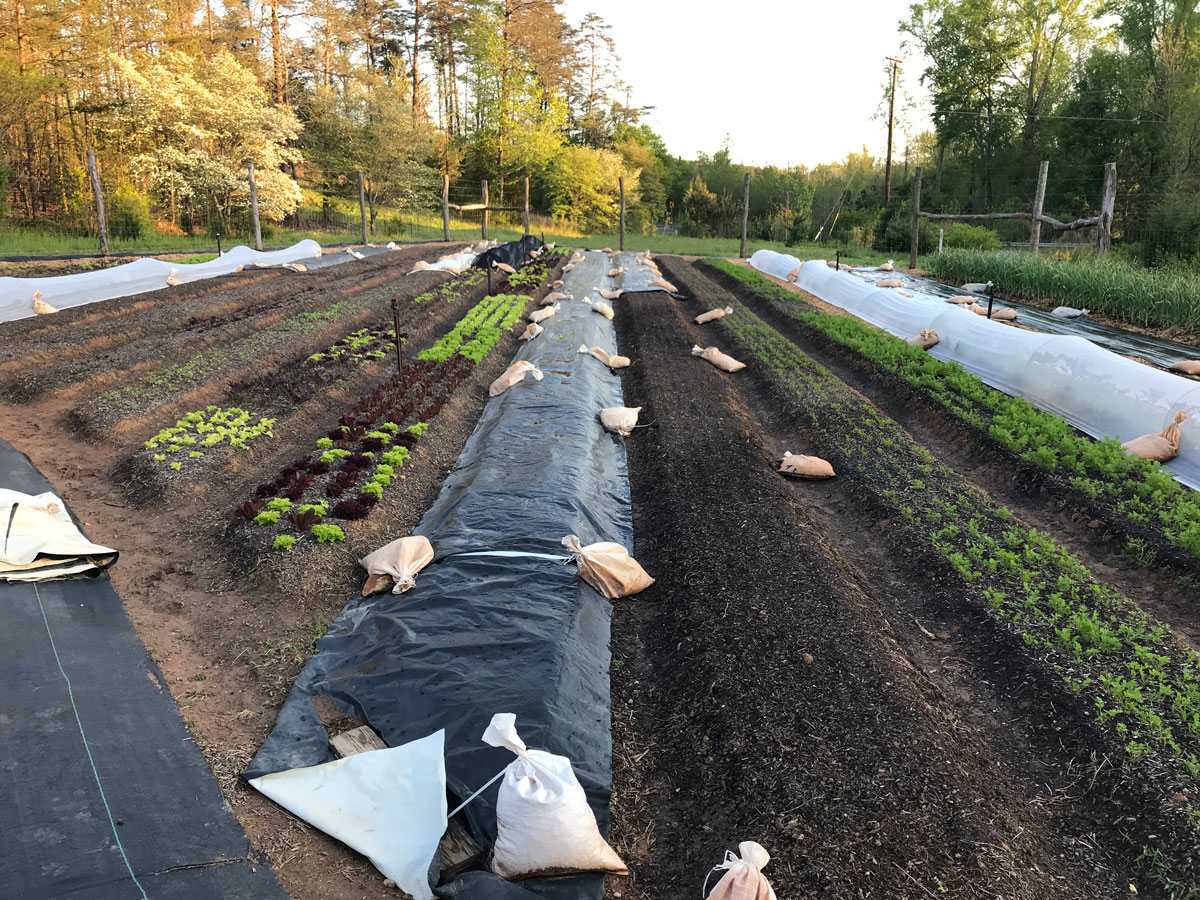
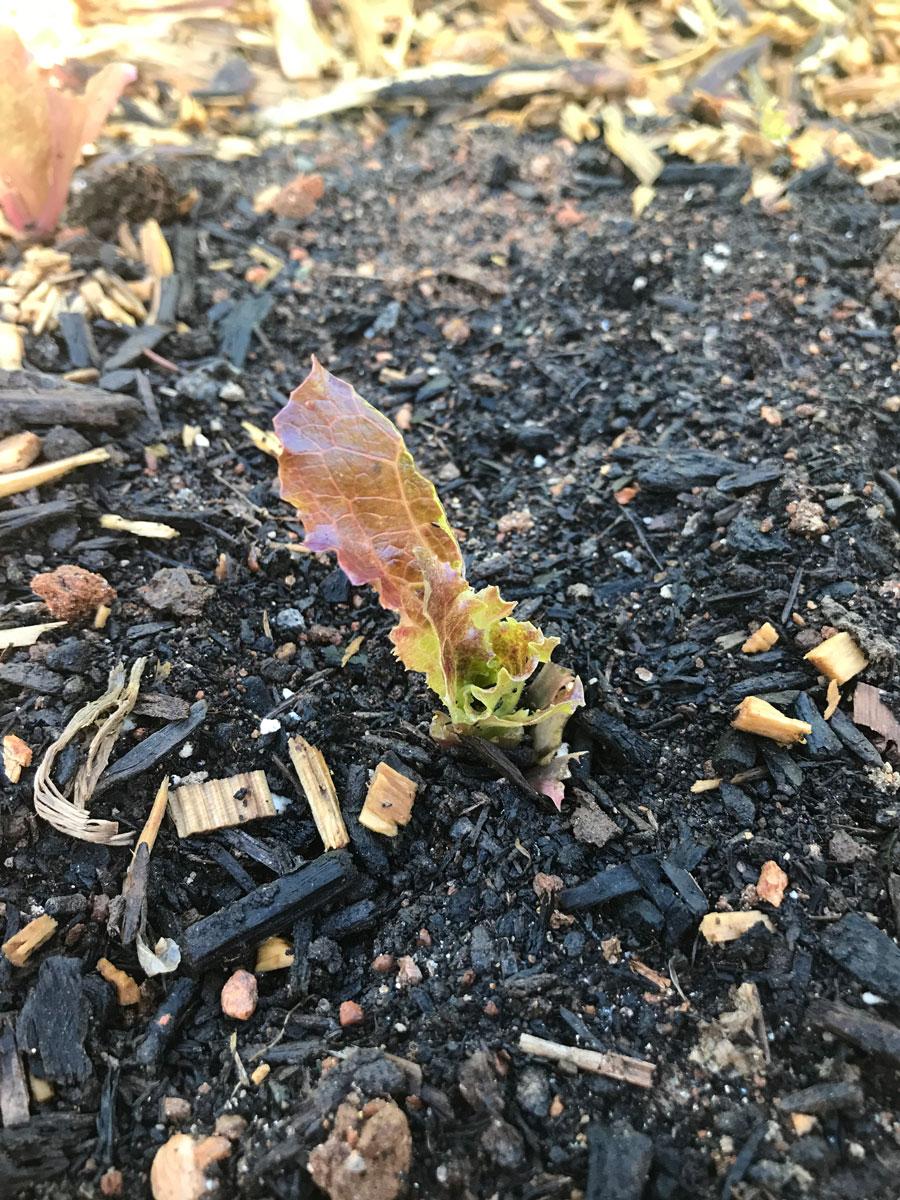
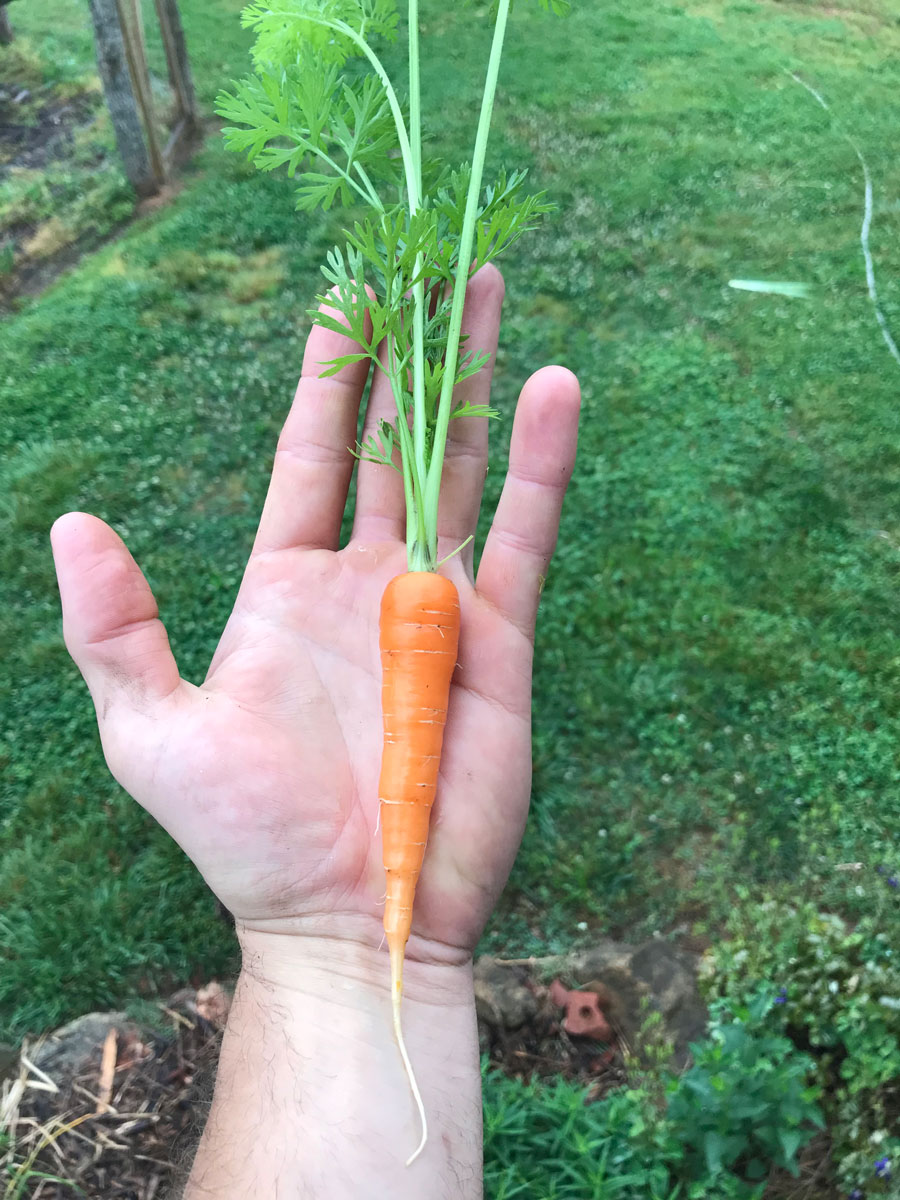
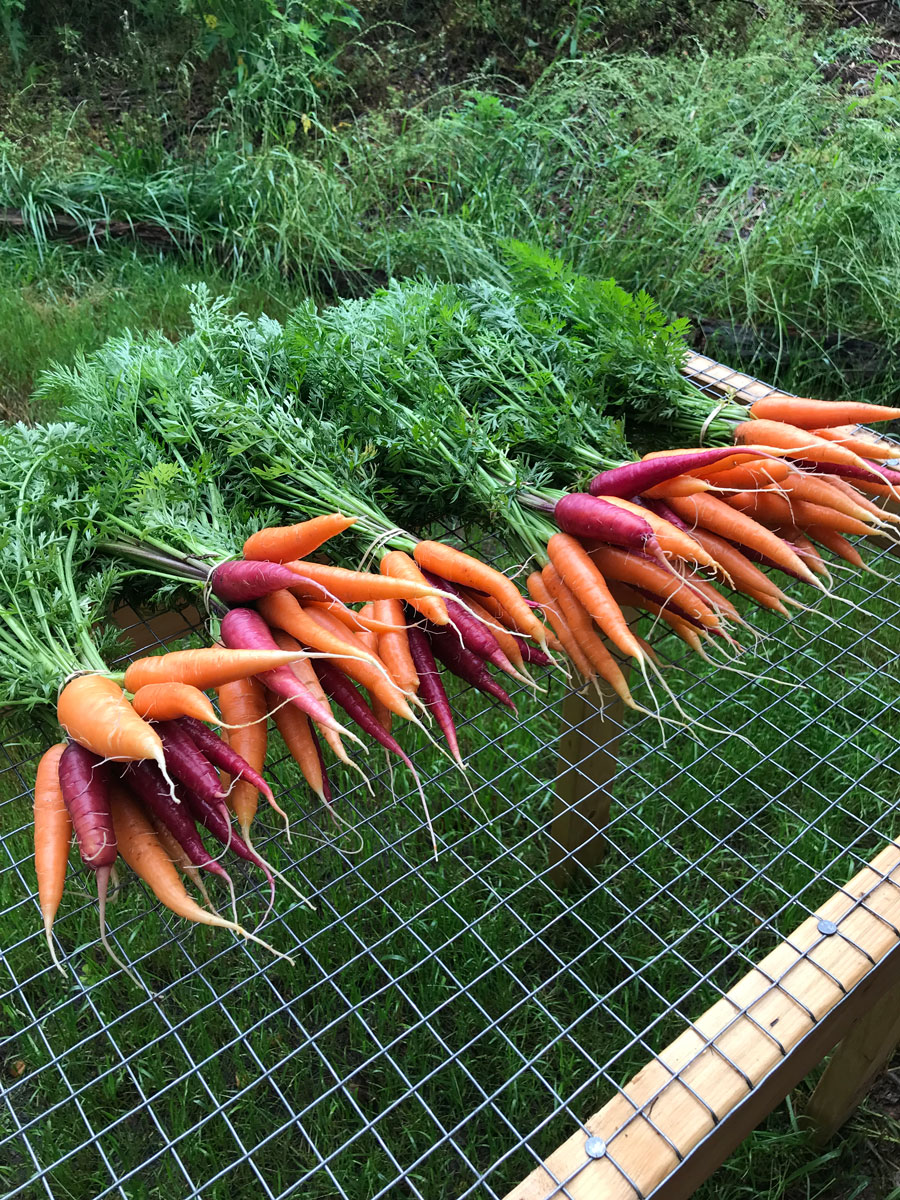
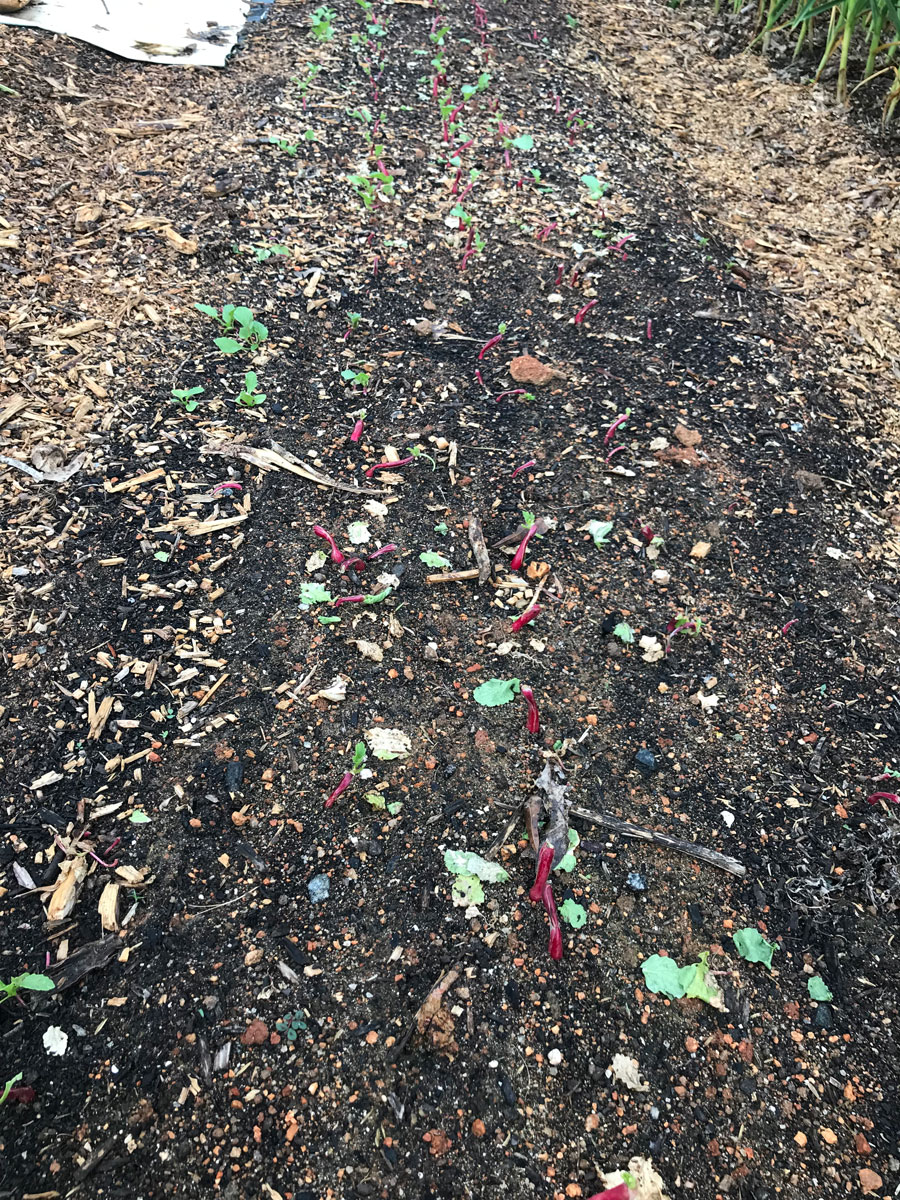
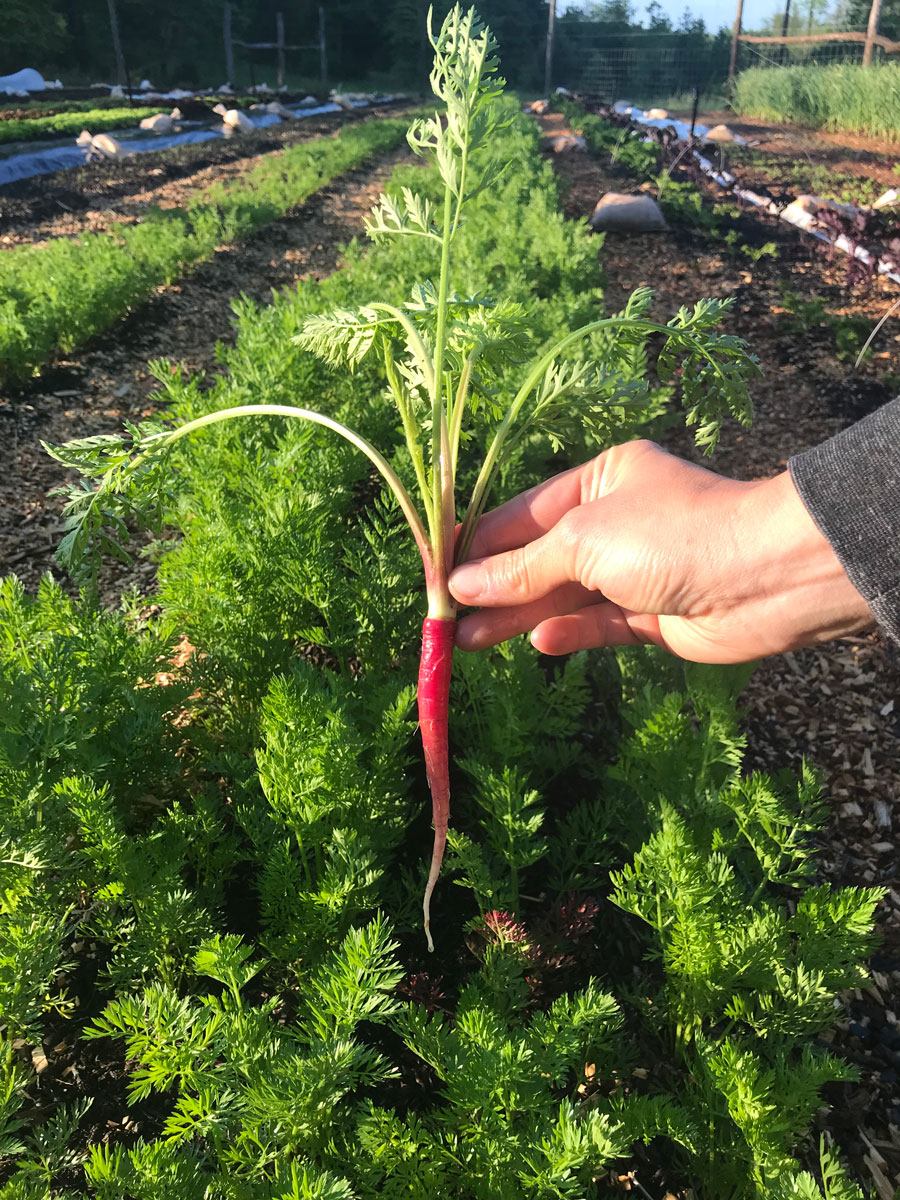
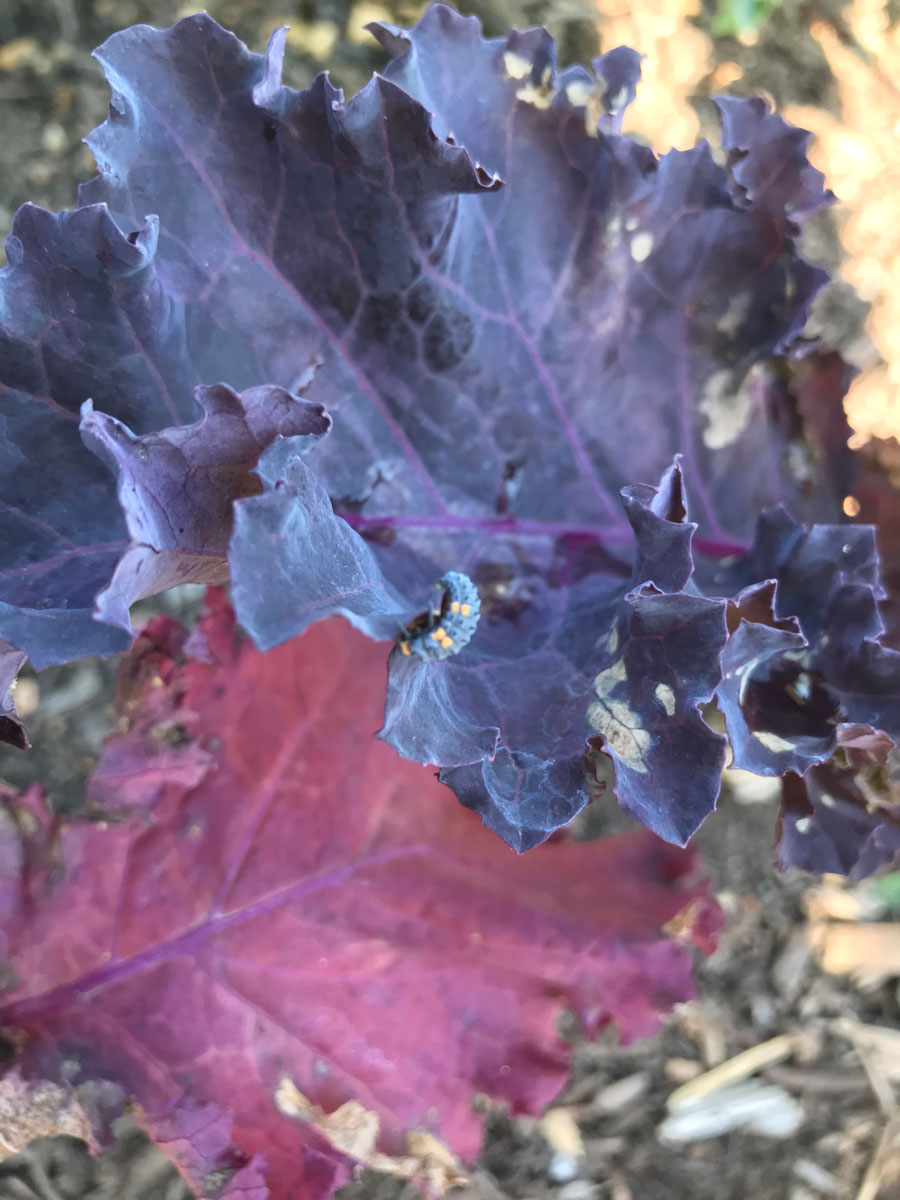
We are still working on getting the plot wood chipped, but with the season ramping up time is quite limited. We’ve had some serious rain in the last month sometimes the week’s rainfall is over a foot. For the most part the wood chips have helped tremendously taking in that water. However, looking back we made an error that caused a problem with the first heavy rain. Our plot is on a slight hill and we had started on the bottom of the hill where the water flows out. The heavy rainfall pushed the chips into a wall and caused all the runoff water to wash over the bottom 3 beds and made quite a mess. Luckily it was not too bad, we were able to fix the issue and have not had any issues since. The wood chips have suppressed weeds compared to the rest of the plot and appear to be holding water in the soil compared to other rows not chipped.
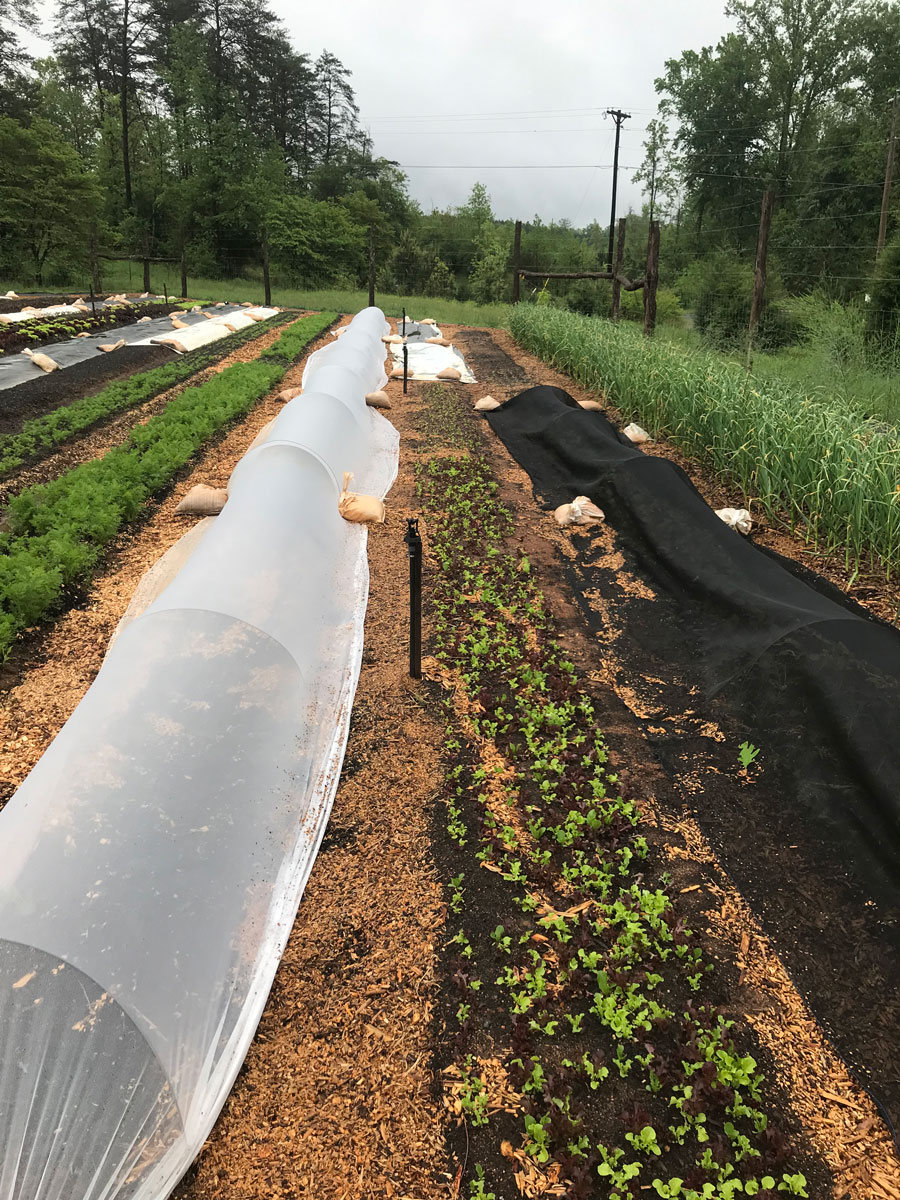
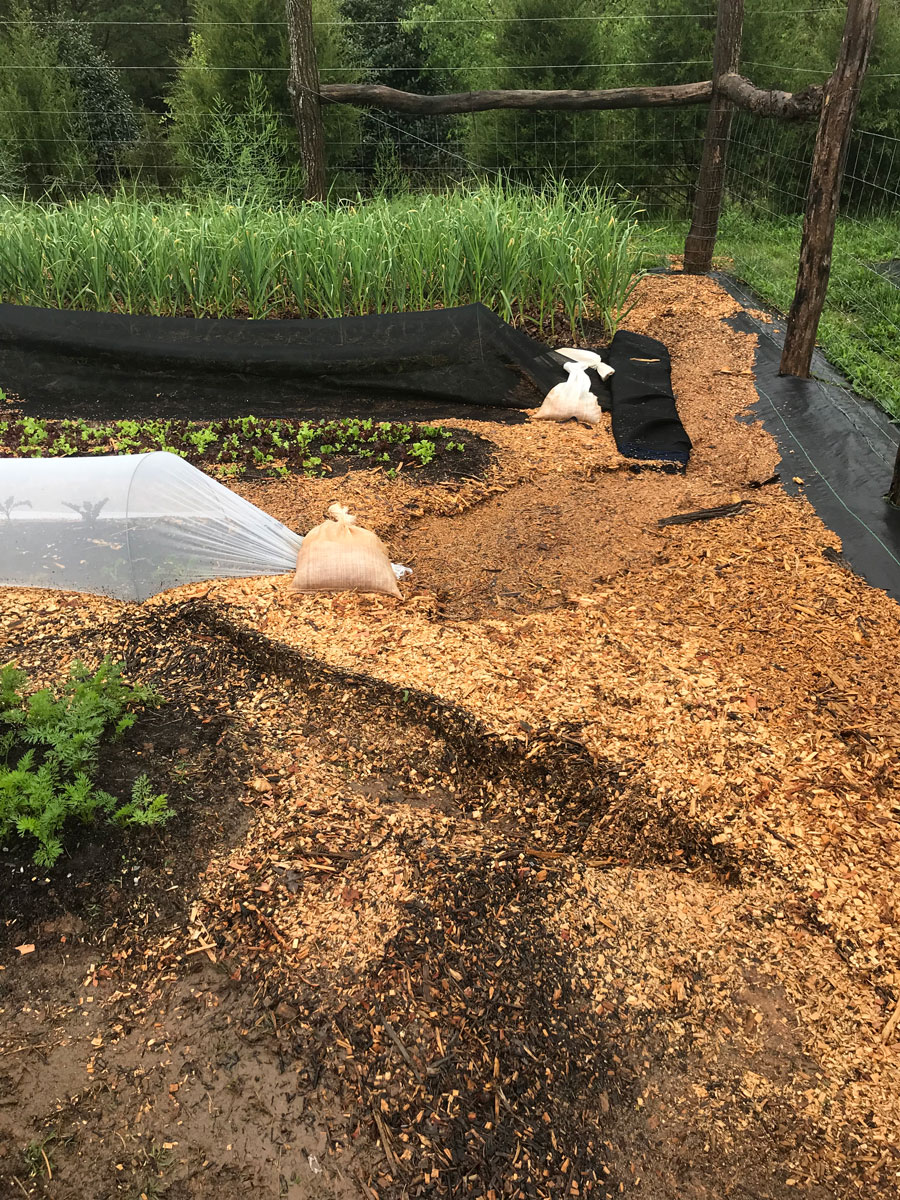
Chickens:
After our last update we had got our 12 pullets and then lost 3 of them in the first 3 days to the hens. Well since then we split the 2 fences up and had each flock by themselves next to each other until the younger hens were 12 weeks old. This proved to be the best idea looking back, we introduced them a 12 weeks and it went great! A little pecking and it has taken a few weeks for them to mingle together but they are now a flock of 19 hens. We are also picking up another 12 pullets next week to grow our laying flock to 31 hens. Our eggs have been selling out every market quickly.
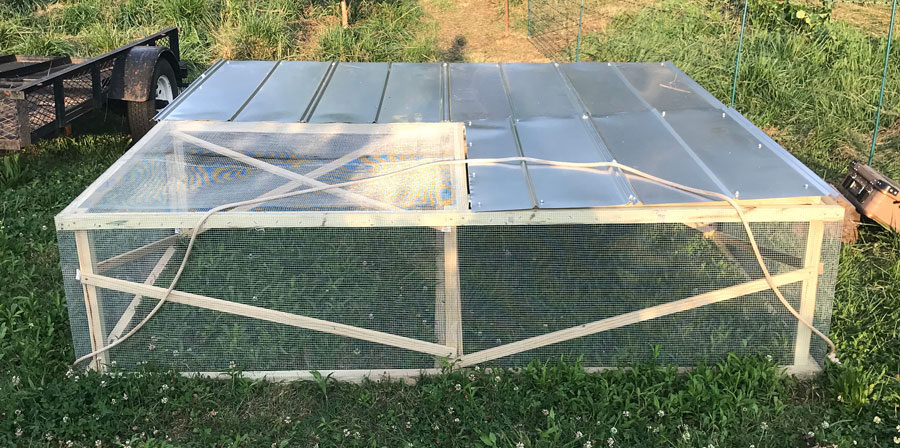
We plan to raise birds for meat in the fall and had plans to build a Joel Salatin Style chicken tractor for them. However that project got bumped up so that we could use it for the pullets. We will raise the pullets in the chicken tractor very similar to meat birds and moving them regularly until they are 12 weeks old and we can introduce them to the flock.
Wash-Pack Shed:
By far, we would not be able to do this without the wash-pack shed and cooler(especially). We’ve already hit over 90 degrees and having a cooler and sheltered place to harvest is very important! If you would like to see pictures of the build look HERE and HERE.
Storage Shed:
We are actually really excited about this project. It has become quite apparent that we need a space to put all the hand tools, row cover, feed,… We are building a 8’x16′ shed to store all the farm stuff. The main frame will be with dimensional lumber (2×6 and 2×4) with black locust poles we had left over from building our fence around the plots. The shed will be completely open on one side and covered on the other three sides with sawmill slab waste. We found a local sawmill cutting hardwood timbers for log homes that we were able to pickup a huge bundle for almost nothing. Some of the nicer wide pieces we will nail up for siding. Should look pretty neat and fit right in naturally, giving us a large area to store feed, row cover, tools, and anything else we need to store. And a great place to dry onions or garlic.
Expansion?
Expanding the farm in has been in the back of our minds since starting the farm in 2018 and growing the area under cultivation. This project moved up on our radar after selling out of produce the last few weekends (Shout out to our awesome customers at the Mount Holly Farmer’s Market!) It is a difficult step to validate and we have taken our time and thought about it over the past few months. We’ve spotted the new area out, taken some preliminary drawings and measurements to figure out what might be appropriate to fit in the area. Our farm currently is on the flattest piece of our property and expansion is difficult and will require earth moving to do so. The next most suitable place has a slope of about 6%, too much for our growing. As a result, we are being forced to look into terracing the beds out, either individually or as a whole and hiring a contractor.
The area, we are currently growing in 4800 square feet of bed space (paths not included) which is a little under 1/8 acre. With the expansion planned as it is now, the maximum feasible to do, we would add another 6000 square feet of permanent beds, totaling 10800 square feet (1/4 acre). This amount of growing space allows us the opportunity to grow, but also devote space to longer season crops and experiment with cover crops.
Growing in increasingly larger areas. Six years ago we started in a 10 foot square plot. Here is a neat progression of the space (roughly) we were growing in over the years and part of our story:
- 2013 – 0 square feet
- 2014 – 100 square feet
- 2015 – 576 square feet
- 2016 – 768 square feet
- 2017 – 1,000 square feet
- 2018 – 1,250 square feet
- 2019 – 2,500 square feet
- 2020 – 9,000 square feet
- 2021 – 20,000+ square feet*
*Projected total area.
From Around The Homestead:

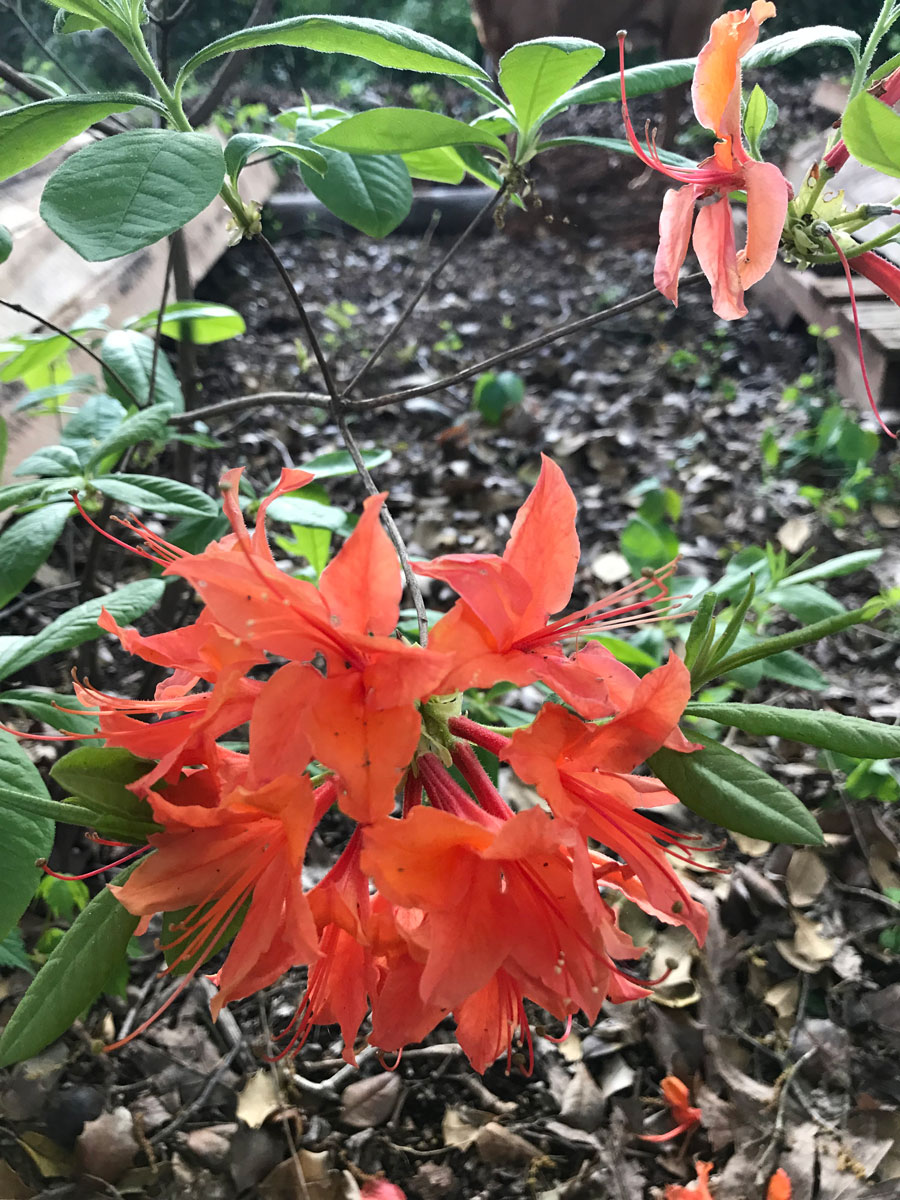
Thanks for reading,

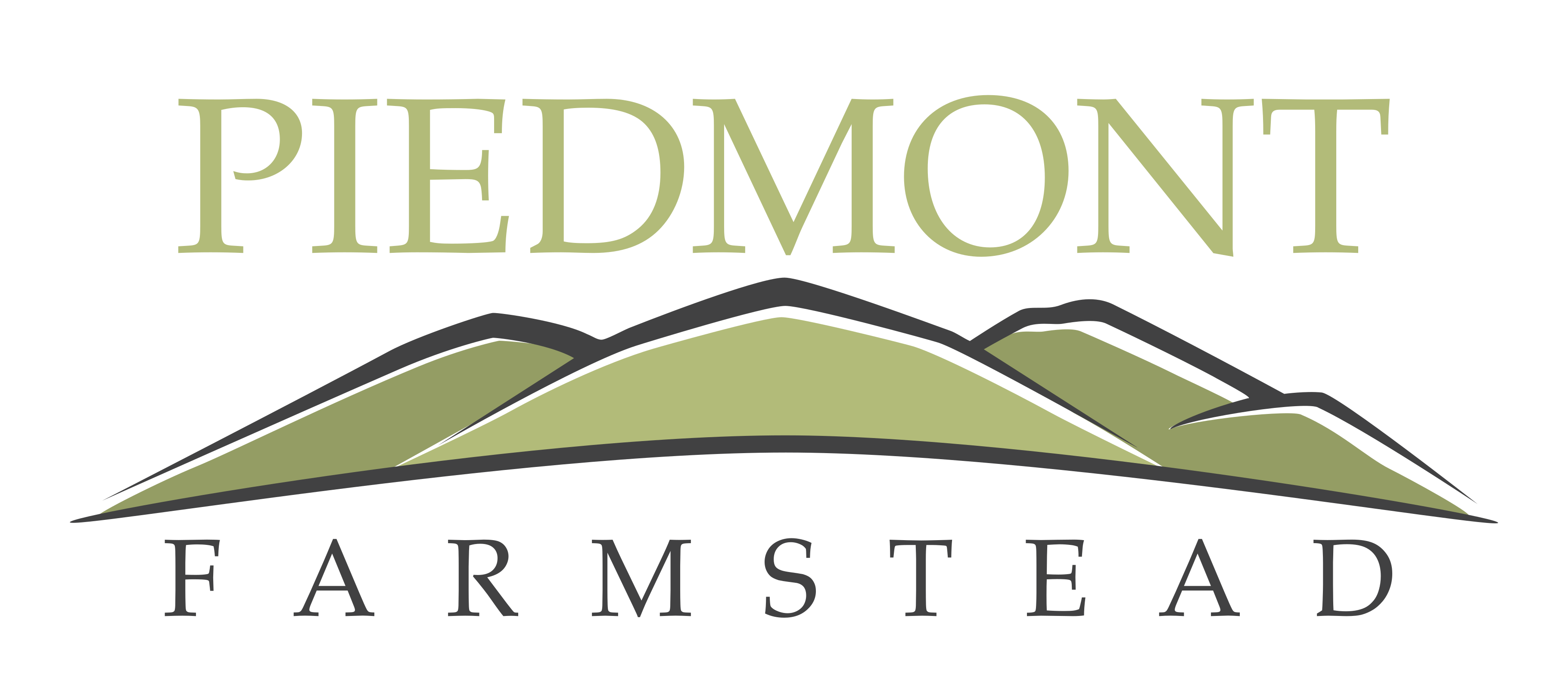

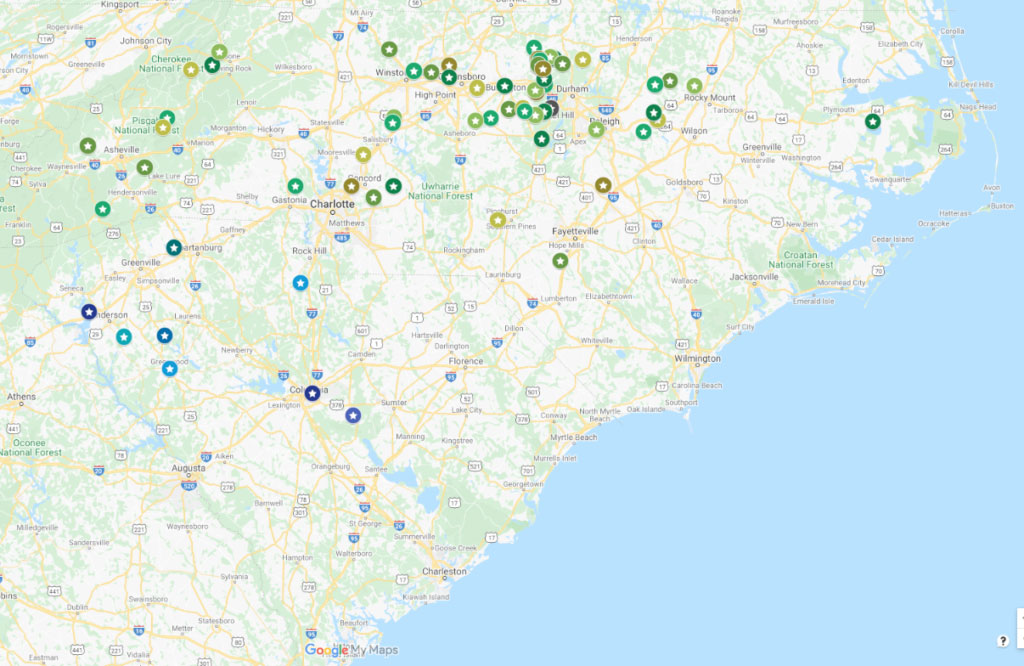
Comment (1)
Joel D Stroot October 15, 2020
Love what you guys are doing! Great work! Glad to meet you at the market and looking forward to keeping in touch!
Joel Stroot
Faith Family Farm